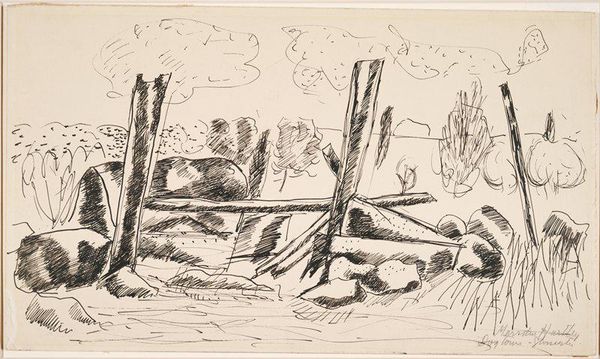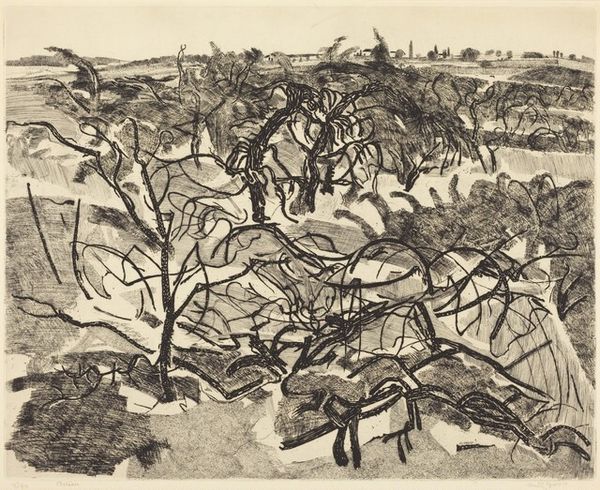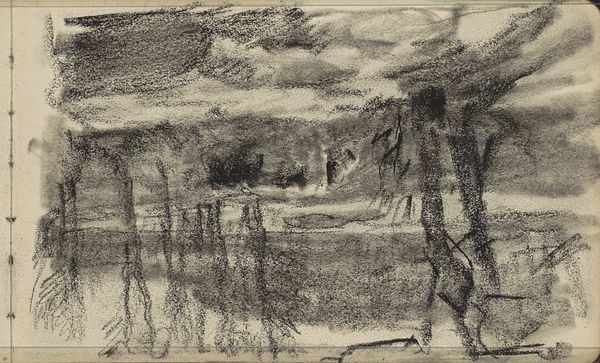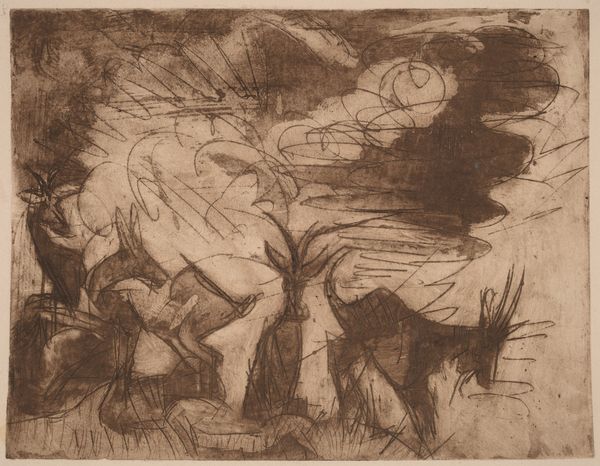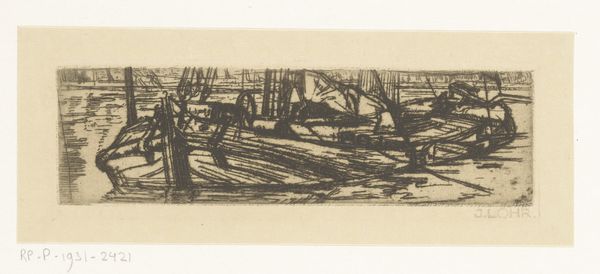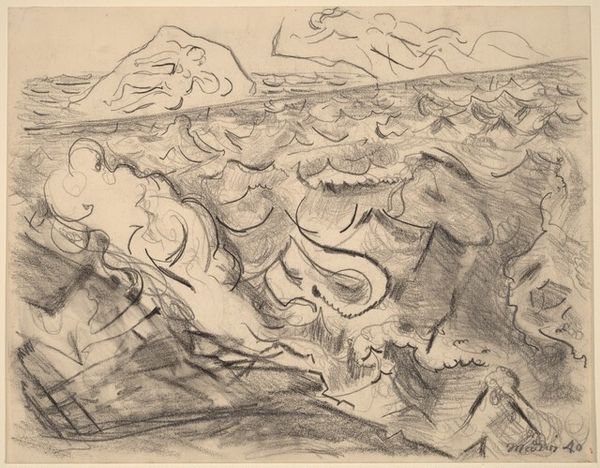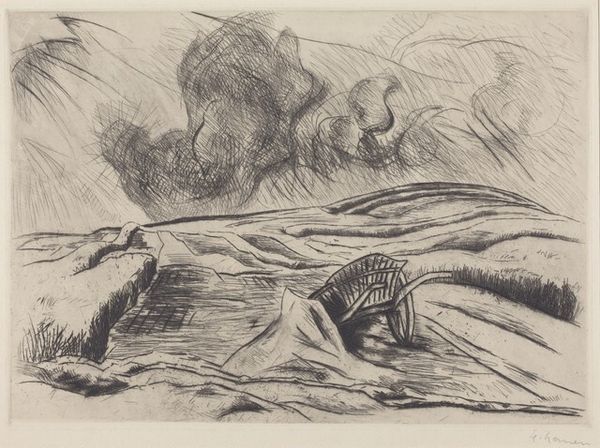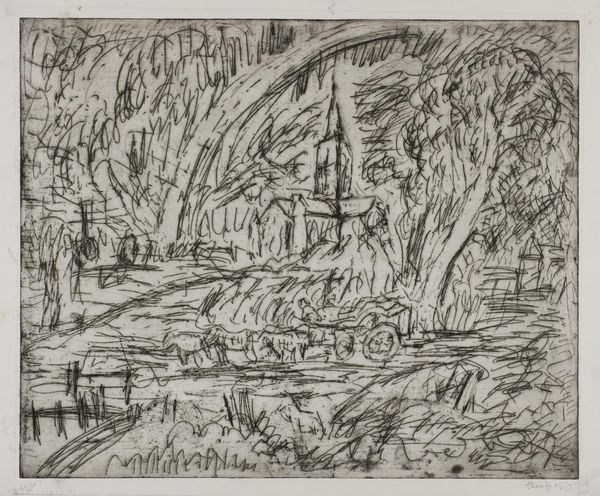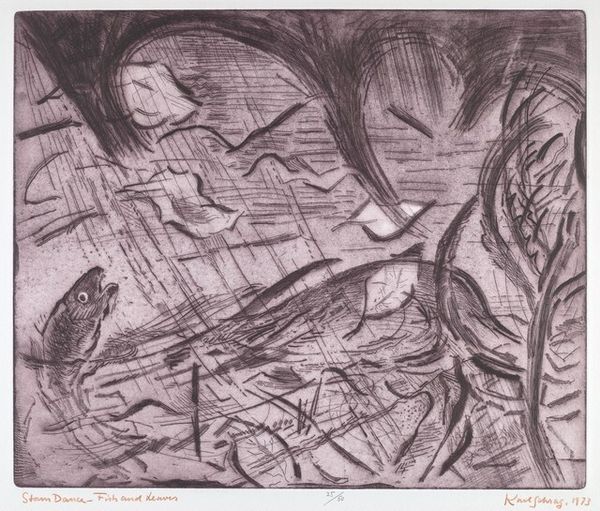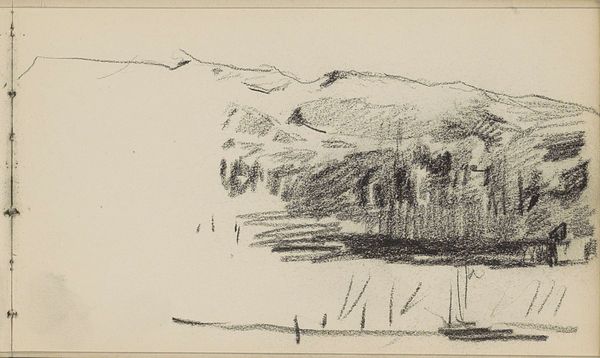
drawing, print, pencil
#
drawing
# print
#
pencil sketch
#
landscape
#
pencil drawing
#
pencil
#
realism
Dimensions: Image: 180 x 290 mm Sheet: 223 x 355 mm
Copyright: National Gallery of Art: CC0 1.0
Curator: This evocative print is Willard Ayer Nash's, "Untitled (Mexican Landscape)," likely created around the 1920s using pencil. What's your initial read? Editor: Stark, desolate. There’s a rawness in the depiction—it almost feels like an abandoned stage set, all potential but somehow...over. Curator: Nash's choice of subject matter in the context of post-revolutionary Mexico raises some interesting questions, doesn’t it? We have this untouched landscape, seemingly devoid of immediate human presence, rendered with the unforgiving mark of pencil. What social commentary might be embedded within this absence? Editor: The starkness evokes a sense of resilience –the iconic Joshua tree prominently placed seems almost defiant. For me, the symbol suggests endurance against a backdrop of uncertainty and the hard sun of Mexico itself. The sharp contrasts and the details in the tree evoke that. Curator: Right, and let’s not overlook the power dynamics inherent in landscape art itself. Who gets to depict the land and from what perspective? Nash, as an American artist capturing a "Mexican Landscape", positions himself in a complex colonial narrative. The romantic, almost melancholy feel perhaps glosses over some deeper inequalities of power in its representation of this specific landscape. Editor: That’s a strong point, and difficult to dismiss entirely, but still, that Joshua tree insists! The light and shadow, and it’s isolated presence…It feels archetypal almost, tapping into collective symbols for struggle and determination that extend beyond any colonial read, speaking more to a generalized stoicism and survival. Curator: I grant the visual potency. Considering broader twentieth-century narratives concerning place and identity, how does the romantic ideal compete, or clash with, representations that center lived experience? How would it read with a different artist, a native Mexican? Editor: Different entirely. In fact, to bring the thread to a close, these nuances we explored point to what remains powerful in symbol work – the capacity for varied readings, for the artist and viewer alike, to fill and refill an image with new and shifting significances. Curator: Well put! Indeed, artworks persist not as fixed meanings but as dynamic participants in ongoing socio-historical dialogues. They are records of what came, as well as mirrors of ourselves and our own concerns today.
Comments
No comments
Be the first to comment and join the conversation on the ultimate creative platform.
